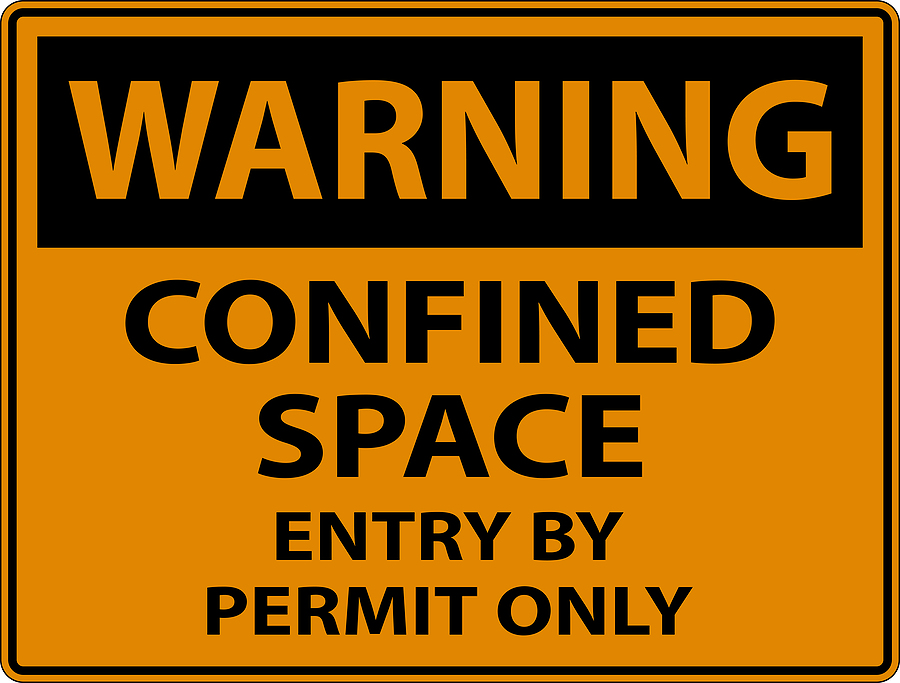Why Confined Space Training is Important and How to Do it Right

Confined space training prepares employees for entry into areas that have a restricted point for entering or exiting and/or are non-ventilated.
With many confined spaces like tanks, silos, tunnels or manholes hotter than 40 degrees Celsius and have toxic gases, there is a risk of deficient in oxygen or combustible dust.
Effective training meets compliance but also protects lives, promotes safe work behaviors and reduces workplace accidents. Here are essential aspects of why confined space training is critical and how to do it right.
#1 Keeping Our Workers Safe and Alive
One of the most important reasons for confined space safety training is to protect workers. Confined spaces create specific hazards — toxic atmospheres, engulfment, entrapment and low oxygen.
Because workers are often unaware of these hazards and unprepared to respond in an emergency situation, a serious workplace accident can result in injury or death. Detailed training teaches workers to recognize the various risks involved and how to reduce them, making their workplace safer and saving their lives.
#2 Compliance with OSHA and Other US Regulations
Confined space training is a requirement for workers who will perform — or work near confined space entry, according to the Occupational Safety and Health Administration (OSHA).
The rules referred to are 29 CFR 1910.146 (Permit-Required Confined Spaces) and create rigid safety practices that employers must adhere to.
And it is not optional — there are laws that mandate compliance. Not training correctly can result and face expensive fines, legal liability and even criminal charges if someone is injured or killed as a result of negligence.
It also ensures compliance while providing evidence of dedication towards worker safety and adherence to laws of the land leaving businesses less exposed.
#3 Getting To Know and Using Safety Equipment Correctly
Due to the nature of these work assignments a wide variety of mechanical safety equipment such as respiratory protection, gas monitors, harness, lifelines and retrieval systems are used.
If not properly trained, workers may mistreat or neglect to inspect and maintain this equipment and it could be rendered virtually useless.
This makes Confined space training all the more necessary, knowing that when it comes to life or death scenarios, employees know how to operate and inspect their gear, ensuring maximum potention from your protective equipment.
#4 Performing Correct Risk Evaluations
Conducting hazard assessments is a key part of confined space training, and must be included in the course. Employees are required to assess possible risks before going into a restricted area such as atmospheric hazards, physical barriers, or structural hazards.
Employees who are trained in the use of gas detection monitors, ventilation devices and other safety measures to determine environmental conditions. This measures plan for preventing incidents of violence and ensures a smoother entry experience.
#5 Having Proper Permit Systems
A formal permit-to-enter process is another layer of accountability that a large number of confined spaces necessitate to ensure hazards are being identified and mitigated.
Confined Space Training helps workers understand the permit requirement, where to obtain permits and follow predetermined entry procedures. This process allows for increased accountability in the workplace and as a result, makes any environment safer.
#6 Fostering Team Coordination and Emergency Response
Another essential thing confined space training emphasizes is the importance of communication and teamwork. Workers must aware of their roles and responsibilities, from entry persons to attendants to rescue persons. This way, confined space can be executed with utmost safety.
This training helps people react quickly and effectively to minimize casualties, even deaths in case of emergency situations. Part of training involves rehearsing rescue scenarios, preparing for the real deal when every second counts.
#7 Reducing Business Risks and Expenses
Mishaps in confined area can cost businesses many dollars because lawsuits, legal charges, equipment destruction and effectiveness losses.
This means that fewer incidents take place, preserving the bottom line along with showing the employee commitment of an employer towards safety by better corporate governance through confined space training. It increases the confidence of employees which raises morale and turnover becomes lower.
How to Do Confined Space Training Right
- Employ Certified Trainers: Use experienced and certified trainers with a thorough knowledge of OSHA requirements and real-life experiences.
- Implement Frequent Refresher Training: Confined space training is not a single event; it should have regular refreshers to make workers aware of the new hazards and safe techniques.
- Practice What You Follow: Workers need hands-on practical training over theoretical knowledge to gain confidence while going for confined space entry and rescues.
- Use Correct Equipment: On-site training should involve the various tools and protective equipment that workers will be using to ensure that they are familiar with, and comfortable with, their use.
Ultimately, confined space training goes beyond a simple regulatory checkbox; it is a life-saving initiative that helps an entire workforce become more aware of risks and how to address them, a means for you as an employer to improve workplace safety, and a way to guard against astronomical liabilities!
With well-rounded training, every confined space job can be performed correctly, every time.
